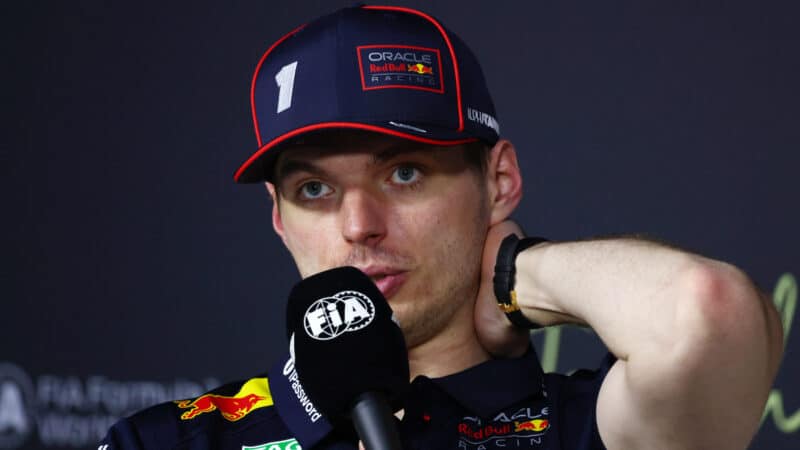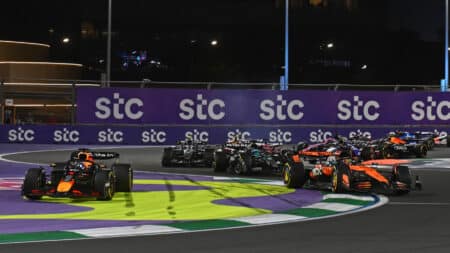The FIA toughened its International Sporting Code for this year, stating that swearing could result in a €40,000 fine.
Repeat offences could include possible suspension and deduction of championship points.
Asked to clarify whom his frustration was aimed at, Verstappen added: “I mean, I know that I cannot swear in here, but at the same time, you can also not be critical or any kind of form that might harm or danger or let me get the sheet out there’s a lot of lines, you know?
“So that’s why it’s better not to talk about it, because you can put yourself in trouble. And I don’t think anyone wants that.”
When the world champion was told on the radio about his penalty during today’s race, he replied: “That’s f***ing lovely.”


